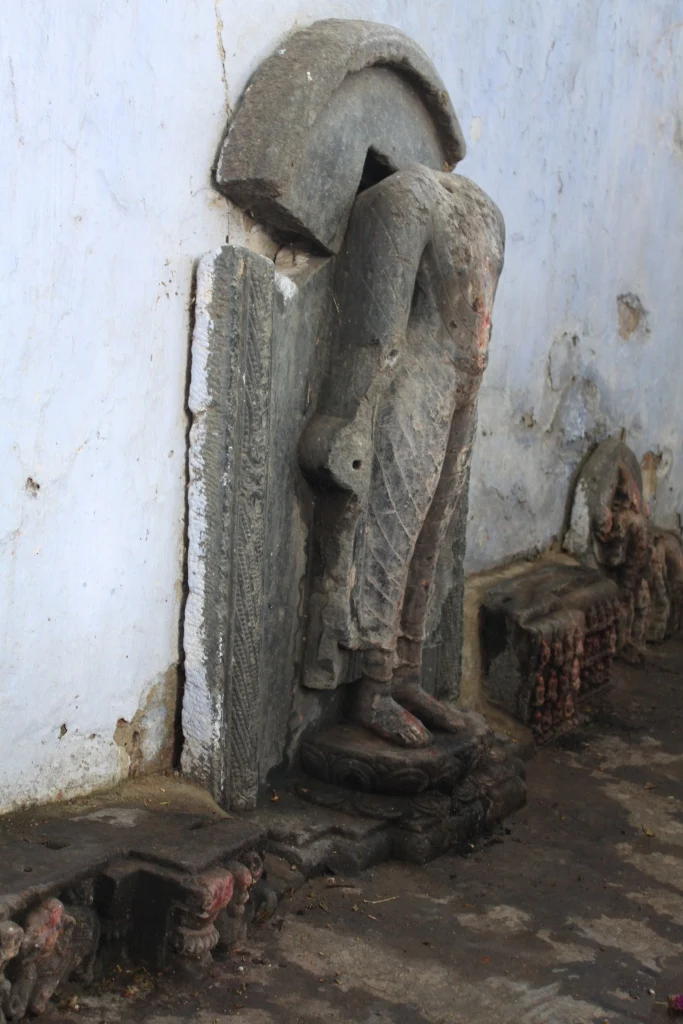In 1934 CE (2477 BE), a British archaeologist discovered numerous ancient artifacts—such as Buddha images, stone stupas, and sculpted temple entrance stones—in Silao Village, located on the road between Rājagaha (Rajgir) and Nālandā in present-day Bihar, India. Today, Silao is a well-known tourist stop, famed for its sweet called Khaja (known among Thais as “Kha-cha,” humorously suggesting it makes your legs numb).
In the Buddha’s time, this area was a royal park belonging to King Bimbisāra, called Amba-Latthika-Vana, meaning “Mango and Palm Grove.” Prince Rāhula, the Buddha’s son, once spent the rains retreat (vassa) here before the King donated the park to the monastic order, making it a full-fledged monastery—similar to the Veḷuvana (Bamboo Grove) monastery.
This site is notable for being the setting of the Brahmajāla Sutta, the first sutta in the Dīgha Nikāya of the Pāli Tipiṭaka. If you open Volume 9 of the Pāli Canon (the first volume of the Sutta Pitaka), you will immediately find this sutta.
Story Background in the Brahmajāla Sutta:
The sutta begins with Suppiya the Wanderer (paribbājaka) and his disciple Brahmadatta Kumāra traveling together. They arrived at the Amba-Latthika Royal Park. Had this been the only detail, we might not know its location—but the Pāli text clarifies:
“antarā ca Rājagahaṁ antarā ca Nālandāṁ”
—meaning "between Rājagaha and Nālandā.”
This is key: the distance between Rajgir and Nālandā is about 16 km, and halfway lies the village of Silao. At this spot, master and disciple had a sharp disagreement—the teacher insulted the Buddha, the Dhamma, and the Saṅgha, while the student praised and revered them. This incident reached the Buddha, who used it as a teaching moment to deliver a profound discourse on three levels of morality (minor, medium, and great), and the 62 wrong views (diṭṭhi), prevalent in ancient India.
Discovery of Mahākassapa’s Sculpture:
At the edge of the village, there are remains of ancient Buddhist structures. One artifact discovered was a black stone statue in a kneeling posture. Without an inscription, its identity would be unknown. Luckily, an inscription in Sanskrit, written in the script of the Pāla Dynasty (circa 1300 BE / 757 CE), is carved on the statue’s base.
Sanskrit Inscription (summarized in translation):
Success! He who had once been a mighty king of the gods for seven cycles without interruption, who was born into a noble and glorious human family, radiant like gold, swift beyond measure, and who renounced riches and wife with contentment—this noble being turned his mind toward the suffering and forsaken. Even the gods revere him. He was deeply devoted to the Blessed One (Bhagavat Buddha), and during the time of the Buddha’s passing (Parinibbāna), the Buddha granted him the remaining monastic robe (saṅghāṭi). He became the upholder of the Dhamma, guiding others to the path of Nibbāna. On a sacred mountain called Gurupāda, this being, Mahākassapa, continues to shine.
Key Highlights:
The inscription clearly names the mountain "Gurupāda" using the phrase:
“Gurupāde girau ramye” — “on the delightful mountain called Gurupāda.”
It also confirms that Mahākassapa attained final liberation (parinibbāna) at this location.
This strongly links Mahākassapa with Gurupāda Mountain, but identifying the exact mountain isn’t simple because the state of Bihar has many hills.
Scholarly Opinions on the Identity of Gurupāda:
Sir Alexander Cunningham believed that the modern Kurkihar Hill is the Gurupāda of the inscription.
Sir John Marshall identified it as the modern Gurpa Hill.
Mukherjee, an Indian historian and archaeologist, also pointed to Gurpa Hill, where a stone footprint of Mahākassapa was found at the summit—with an inscription surrounding it.
Today, most scholars agree that Gurupāda refers to Gurpa Hill, located in Gaya District, Bihar, based on:
The inscription’s mention of Gurupāda.
The footprint relic.
Corroborating distance and location data from Yijing, the Chinese monk-traveler and scholar.
Status Today:
The statue of Mahākassapa still exists in a small Hindu temple at the back of Silao village, where the Khaja sweets are sold.
Occasionally, local Hindu devotees apply red and orange powder to the statue as part of their offering rituals.
Linguistic Note:
The name “Kassapa” in Pāli is Kassapa (कस्सप), while in Sanskrit it appears as Kāśyapa (काश्यप).
